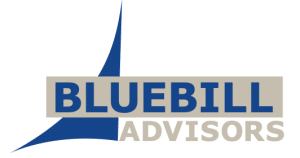Obie announced the launch of its new browser extension to democratize access to Obie’s core search, access, and knowledge sharing functionality. They also launched Personal Pro and Personal Free plans that decouple Obie’s search functionality from Slack for the first time to expand availability for individuals and remote teams. Obie uses natural language processing (NLP) to understand complex queries, as well as machine learning (ML) to improve results with every document search. Users can also manually add “FAQs” to store templates, text snippets, and frequently accessed information by simply highlighting the information in their browser and adding it to Obie.
Category: Collaboration and workplace (Page 29 of 98)
This category is focused on enterprise / workplace collaboration tools and strategies, including office suites, intranets, knowledge management, and enterprise adoption of social networking tools and approaches.
Serviceaide, Inc., a provider of intelligent, enterprise service management solutions, announced the launch of Luma Knowledge, a self-learning, knowledge-centered product that optimizes access, creation and reuse of enterprise knowledge to service and support needs of users and customers. The maker of the AI-powered Luma Virtual Agent, Serviceaide is leveraging AI technologies like natural language processing and machine learning in digital interactions, knowledge and automation to bring advanced capabilities and business value to service and support functions across the enterprise. Features and capabilities:
- The Luma Knowledge hub provides a common tool to actively correlate and access information federated across the enterprise.
- Luma Knowledge offers a common semantic pathway to all enterprise knowledge.
- Natural Language Processing auto extracts topics and pulls text from complex documents to auto-create FAQs.
- A dynamic guided search capability, based on available knowledge, helps users access the right information even when they don’t know exactly what to ask for, and don’t know what is in the knowledge base.
- Automated learning leverages machine learning to auto-tune retrievals and identify missing content or other related issues.
- Knowledge Sharing – Federating across multiple knowledge bases, semantic searches and guiding requests deliver accurate knowledge
- Knowledge Discovery – Proactively discovering knowledge both inside an organization and from external sources
- Knowledge Improvement – Continuous monitoring of knowledge and feedback to provide recommendations for needed knowledge, correcting knowledge and searches, and retiring unused knowledge
iManage announced the availability of iManage RAVN Knowledge Unlocked. With Knowledge Unlocked, iManage has productized Knowledge Management and RAVN AI, making them accessible to a broader market through packaged solutions that are easy to deploy and use, and integrated with their document and email management product, iManage Work 10. iManage enables law firms, legal departments, and professional services organizations of any size to use AI with Work 10 plug-ins that minimize the need for dedicated Knowledge Management (KM) staff, AI expertise, or outside services. IT-implemented and user-driven, Knowledge Unlocked enables knowledge workers to capture and reuse important data locked in data repositories, mine best practices, and identify knowledge and experts across their organizations to get to the information they need, when they need it.
Knowledge Unlocked brings together various KM and AI capabilities – including classification, search, and machine learning – in an integrated package, taking what would previously have been individual products and combining them to solve specific KM problems with greater efficiency. The solution extends the document retrieval-oriented search of Work 10 to knowledge search that enables organizations to surface relevant matters, clauses, people or expertise that could be of value to the user.
Knowledge Unlocked is available in three editions – Essentials, Professional, and Enterprise – each with an increasing level of capability and sophistication. The tiers have been designed so that organizations don’t have to go through expensive system replacement to get to the next level in AI – they can continue to build upon Knowledge Unlocked.
Ontotext (OT) and Semantic Web Company (SWC) announced a strategic partnership to meet the requirements of enterprise architects such as deployment, monitoring, resilience, and interoperability with other enterprise IT systems and security. Users will be able to work with a feature-rich toolset to manage a graph composed of billions of edges that is hosted in data centers around the world. The companies have implemented an integration of the PoolParty Semantic SuiteTM v.8 with the GraphDB and Ontotext Platform, which offers benefits for numerous use cases:
- GraphDB powering PoolParty: Most of the knowledge graph management tools out there bundle open-source solutions that are good at managing thousands of concepts, whereas PoolParty bundled with GraphDB manages millions of concepts and entities—without extra deployment overheads.
- PoolParty linked to high-availability GraphDB cluster: GraphDB can now be used as an external store for PoolParty, which offers a combination of performance, scalability and resilience. This is particularly relevant for organizations intent on developing tailor-made knowledge graph platforms integrated into their existing data and content management infrastructure.
- Dynamic text analysis using big knowledge graphs: PoolParty can be used to edit big knowledge graphs in order to tune the behavior of Ontotext’s text analysis pipelines, which employ vast amounts of domain knowledge to boost precision. This way the power and comprehensiveness of generic off-the-shelf natural language processing (NLP) pipelines can be custom-tailored to an enterprise.
- GraphQL benefits for PoolParty: Application developers can now access the knowledge graph via GraphQL to build end-user applications or integrate knowledge graph services with the functionality of existing systems. Ontotext Platform uses semantic business objects, defined by subject matter experts and business analysts, to generate GraphQL interfaces and transform them into SPARQL.
Cisco announced Webex enhancements including: security and compliance capabilities, intelligent and insights to deliver consistent user experiences, and an integrations with Box for fie sharing and Epic for telehealth.
The Webex platform at 3X the previous capacity; expanded encryption options include AES 256 Bit encryption with GCM mode, providing increased protection for meeting data and resistance against tampering.
New means to manage an enlarged remote workforce and a return to office with Cisco Webex Control Hub provides insights, helping IT manage all collaboration workloads through a single pane of glass whether workers are at home or in the office. New to Control Hub is a cloud-connected UC feature that simplifies IT workflows for hybrid deployments and expanded Webex Calling analytics.
Cisco has integrated Webex Teams and Box, the cloud content management platform. Webex Teams already has a secure file sharing capability. But now customers can choose to use Box as well as any of the other platforms we integrate with.
The new integration with Epic electronic health record software enables providers to use Webex Teams to conduct a video visit with a patient, review medical history and update clinical documentation. Patients don’t need to download anything — they just login to the secure session over a web browser.
NetDocuments, the secure multi-tenant cloud-based content services and productivity platform for law firms, corporate legal teams, and compliance departments, announced the availability of ChatLink, an integration that links Microsoft Teams to NetDocuments. With ChatLink, Teams users now connect channels with NetDocuments workspaces and secure threads. ChatLink enables users to continue working inside the Microsoft Teams interface while maintaining complete access to NetDocuments workspaces and conversations within ndThread to adhere to compliance and governance rules. Administrators can manually or programmatically associate a channel with an existing NetDocuments matter or project, making documents available in a tab within the channel. Likewise, an embedded view of associated chats in ndThread, allow for multiple conversations to happen within a matter while securing them to the matter file.
Amazon Web Services and Slack Technologies announced a new multi-year agreement to deliver solutions for enterprise workforce collaboration. Slack and AWS will strategically partner to help distributed development teams communicate and become more efficient and agile in managing their AWS resources from inside Slack. Slack will migrate its Slack Calls capability for all voice and video calling to Amazon Chime, AWS’s communications service that lets users meet, chat, and place business calls. Slack is also leveraging AWS’s global infrastructure to support enterprise customers’ adoption of its platform and to offer them data residency – the ability to choose which country or region their data is stored at rest in while fulfilling compliance requirements. Slack continues to rely on AWS as its preferred cloud provider and will use a range of AWS services, including storage, compute, database, security, analytics, and machine learning, to develop new collaboration features. Additionally, AWS has agreed to use Slack to simplify the way teams at AWS communicate and work together.
Slack and AWS will also extend product integration and deepen interoperability. These integrations include:
- Amazon Chime infrastructure with Slack Calls
- AWS Key Management Service with Slack Enterprise Key Management (EKM)
- AWS Chatbot integration with Slack
- Amazon AppFlow integration with Slack
Atlassian announced 12 new collaboration features, automations and integrations in order to help developers take their time back and ship better code, faster. There are too many disconnected tools, manual processes, and constantly changing collaboration practices are blocking developers from reaching the full promise of DevOps. Developers need less context switching. Fewer meetings. Fewer pings from IT about security incidents. Just more time to code and deliver value to customers. The goal is to help developers focus on their code with connected development, IT operations, and business teams with automation that spans Atlassian products and third-party tools. With Jira as the backbone and ultimate source of truth, Atlassian unifies all of DevOps work to reduce collaboration overload. There are deep integrations between Jira Software Cloud and Bitbucket Cloud, GitHub, and GitLab so that issue tracking and project updates happen right where you code, automatically. No need to go back to Jira. And your project manager won’t have to ping you for updates and interrupt your coding flow, because your project board will automatically update based on your work in Bitbucket, GitHub, or GitLab.

